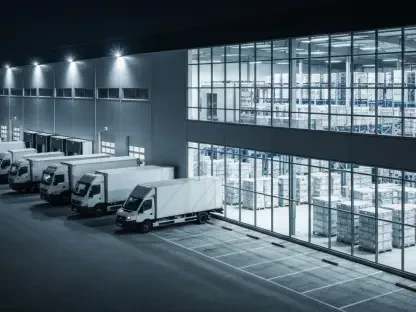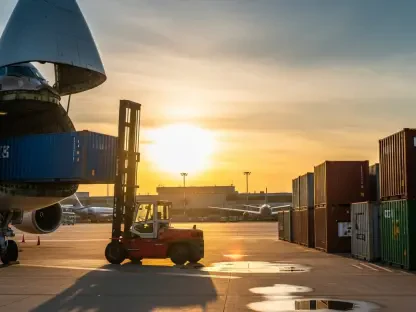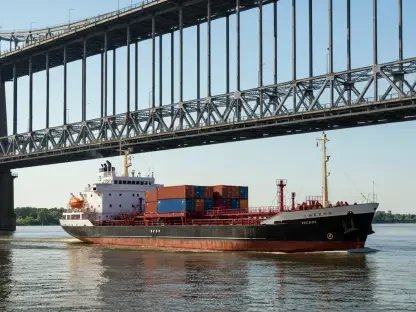In a world where global trade can grind to a halt with a single geopolitical flare-up, manufacturers are grappling with an unprecedented challenge: how to keep production lines moving when nothing seems certain. Picture a major port closure in Asia disrupting shipments of critical components overnight, leaving factories idle and deadlines missed. This isn’t a hypothetical scenario—it’s the reality many companies face in 2025. Supply chain uncertainty has become a relentless force, testing the limits of even the most established businesses. What separates those who falter from those who thrive is not luck, but strategy. This feature dives deep into the chaos of modern supply chains and uncovers actionable paths to resilience.
The stakes couldn’t be higher for manufacturers today. A single disruption can snowball into millions in losses, tarnished brand reputations, and lost market share. With customers expecting faster deliveries and sustainable practices, the pressure to adapt is unrelenting. This story matters because supply chains are the backbone of manufacturing, and their fragility in an interconnected world can no longer be ignored. From raw material shortages to unpredictable demand spikes, the challenges are complex, but the need for solutions is urgent. Exploring how industry leaders and data point toward resilience offers a roadmap for navigating this turbulent landscape.
Why Supply Chain Uncertainty Defines Manufacturing Today
Supply chains are no longer the predictable systems manufacturers once relied on. Geopolitical tensions can halt shipments in an instant, as seen when trade disputes disrupt access to essential materials. Natural disasters and labor strikes further complicate the picture, leaving companies scrambling to fill gaps. This constant state of flux has redefined the industry, making adaptability not just a competitive edge but a necessity for survival.
Beyond external shocks, internal pressures add to the strain. Just-in-time production models, while efficient, leave little room for error when a supplier fails to deliver. The expectation of rapid response to market changes means that manufacturers must anticipate disruptions before they strike. Understanding this chaotic environment is the first step toward building systems that can withstand the unexpected.
The High Cost of Disruptions in a Globalized Era
A single hiccup in the supply chain can trigger a cascade of consequences. Consider the financial impact: studies estimate that major disruptions cost manufacturers an average of $1.9 million per incident in lost revenue and recovery efforts. Beyond dollars, brand trust takes a hit when products aren’t delivered on time, pushing customers to competitors who can meet demand.
Moreover, globalization has amplified these risks. With supply chains stretching across continents, a delay at a distant port can stall an entire production schedule. The rise of consumer demand for transparency and sustainability adds another layer of complexity, as companies must balance efficiency with ethical practices. Ignoring these realities is no longer an option—resilience has become a core business imperative.
Breaking Down the Forces Behind Supply Chain Chaos
Several key drivers fuel the uncertainty manufacturers face daily. Geopolitical instability often tops the list, with conflicts or trade sanctions cutting off access to critical suppliers overnight. For instance, a recent tariff dispute in a key region left many firms unable to source specific metals, forcing costly production halts.
Raw material scarcity compounds the issue, driven by resource depletion and environmental regulations. Meanwhile, demand fluctuations—such as sudden viral trends on social media—can overwhelm inventory systems unprepared for rapid shifts. Add to this the growing burden of compliance with sustainability mandates, and it’s clear that threats come from every angle, requiring a comprehensive approach to risk management.
Industry Wisdom: Lessons and Data from the Front Lines
Insights from supply chain leaders paint a vivid picture of both challenges and solutions. A veteran executive from a leading automotive manufacturer recently noted, “Digital tools have been a game-changer—real-time tracking saved us from a major shutdown during a supplier crisis last year.” Such perspectives highlight the transformative power of technology in navigating uncertainty.
Hard data backs up these anecdotes. A 2025 industry report revealed that 68% of manufacturers experienced at least one significant disruption in the past 12 months, with those using predictive analytics reporting 30% fewer losses. A notable case study involves a mid-sized electronics firm that avoided disaster by collaborating closely with regional suppliers to reroute shipments during a port strike, proving that human connections can be as vital as tech solutions.
Nine Proven Strategies for Building Unshakable Supply Chains
For manufacturers ready to tackle uncertainty head-on, a robust toolkit of strategies offers a clear path forward. First, embracing digital transformation through cloud-based product lifecycle management (PLM) and quality management systems (QMS) ensures real-time visibility into operations, enabling swift decision-making. These tools cut through the fog of disruption with actionable insights.
Diversifying supplier bases across multiple regions mitigates the risk of localized crises, while implementing structured risk assessment frameworks helps identify vulnerabilities before they escalate. Strengthening communication channels with vendors and internal teams fosters alignment during emergencies. Meanwhile, optimizing inventory with analytics and demand forecasting prevents costly overstocking or shortages.
Further resilience comes from investing in supplier collaboration for joint problem-solving, building operational agility to pivot during unexpected events, and harnessing predictive analytics to anticipate market shifts. Finally, prioritizing compliance and sustainability aligns operations with regulatory and ethical expectations. Together, these nine strategies—tailored to specific needs—equip manufacturers to turn vulnerabilities into strengths.
Looking back, the journey through the turbulent world of supply chain disruptions revealed a critical truth: preparation is the cornerstone of success for those who thrive. Manufacturers who adopted digital tools, diversified partnerships, and prioritized agility often emerged stronger from crises that crippled others. The path wasn’t easy, but it was navigable with the right strategies in place. Moving forward, the focus should shift to continuous innovation—investing in emerging technologies like AI-driven forecasting and deepening supplier trust. By staying proactive and adaptable, companies can not only weather the storms of uncertainty but also redefine what resilience means in a globalized era.









